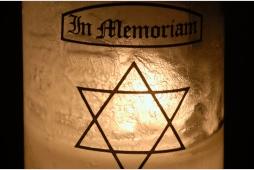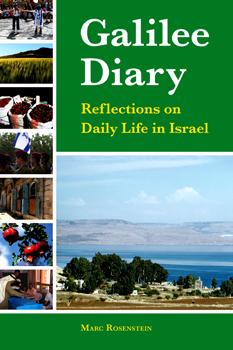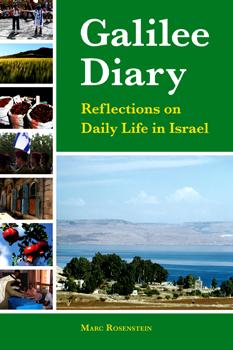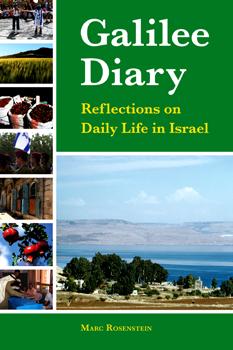4/5/13 Friday – The Rhythm of Jewish Time
HTTP/1.1 200 OK Server: nginx Content-Type: text/html; charset=utf-8 X-Drupal-Cache: MISS Etag: “1365173219-0″ Content-Language: en Link: ; rel=”shortlink”,; rel=”canonical” X-Generator: Drupal 7 (https://drupal.org) Cache-Control: public, max-age=10800 Expires: Sun, 19 Nov 1978 05:00:00 GMT Vary: Cookie,Accept-Encoding Last-Modified: Fri, 05 Apr 2013 14:46:59 GMT X-AH-Environment: prod Content-Length: 95773 Date: Fri, 05 Apr 2013 14:47:02 GMT X-Varnish: 1018474317 Age: 0 Via: 1.1 varnish Connection: keep-alive X-Cache: MISS Yom HaShoah: The Remembrance of Many | Reform Judaism
By By P.J. Schwartz, 4/05/2013
Each year on the 27th day of Nisan, a two-minute siren is sounded throughout Israel. The entire State of Israel comes to a complete halt. Even in the minutes before the siren is sounded, the busy-ness of the streets gradually slows down: bulldozers are turned off; cranes hang empty in the air; cars get parked on the sides of streets, their occupants standing silently alongside their vehicles. On Yom HaShoah, the nearly six million Jews annihilated as part of Hitler’s plan to systematically exterminate the world’s Jews are remembered.
The Israeli law commemorating the Holocaust was enacted in 1953, and in the intervening years-as the impact of the Holocaust has become fully evident-Yom HaShoah has evolved into a day of remembrance for both Israelis and Americans. Although there are few established rituals associated with the day, many families and congregations light yellow yahrzeit candles to keep alive the memories of those killed during the Holocaust. In some communities, these candles represent individual voices of Holocaust victims, whose stories may be retold during a memorial service. In other communities, six yellow candles-representing the six million Jews killed- are lit. As Rabbi Irving Greenberg notes in The Jewish Way: Living the Holidays, “in a day that started with no inherited form, how powerful is the religious spirit that instantly picked out a symbol so totally rooted in tradition yet so contemporary.”1 Indeed, as Rabbi Greenberg also notes, the only “fixed” element of a Yom HaShoah observance has been lighting the yahrzeit candles.
Our Union of Reform Judaism encourages us to use this day to raise awareness about anti-Semitism and inequality, both of which persist today. Other observances focus on a Walk of Remembrance in which participants walk in silence, stopping at pre-arranged memory markers that represent specific Holocaust events. Reading Holocaust poetry, performing plays, and hearing firsthand accounts from survivors are other ways to commemorate Yom HaShoah.
Because Yom HaShoah challenges the covenantal relationship between God and the Jewish people, it forces us to question God’s presence in our lives, to struggle with the reality that our world remains filled with inequality, and to vow “Never again,” pledging to do our part to ensure the world never sees another holocaust. And yet, even as the day contradicts our “normal” pattern of religious observance, it still allows us to reflect upon the atrocities all people have faced and recall the memories of those individuals-known and unknown-who came before us. Yom HaShoah enables us to think about how our understanding of God has evolved, and to ask what place God has in our lives. It gives us the moment in which we not only remember all the good that we have lost, but also the good that can flourish and thrive today.
From Israel’s momentary silence on Yom HaShoah we learn that life continues, even after catastrophe. When the two-minute silence ends, we see that lesson powerfully as shops resume their business, bulldozers and cranes carry on with their tasks, people return to work, and drivers restart their cars, continuing on to their destinations. Here in North America, Yom HaShoah gives us an opportunity to recall those who came before us, to consider the meaning of Judaism in our lives, and to adhere to the Prophetic mandate of our ancestors. On this day, we advocate for ourselves and others, as well as the past, the present and the future. With individual and collective effort-on this day and every day-we can preserve the memory of what was lost and rediscover the light of Judaism, which burns much like the light in a yahrzeit candle.
- Rabbi Irving Greenberg, The Jewish Way: Living the Holidays (Simon and Schuster, New York, 1988): 341-342.
P.J. Schwartz is a fifth-year rabbinic student at Hebrew Union College-Jewish Institute of Religion in Cincinnati, OH, and holds a master’s degree in educational administration with a specialization in Jewish studies from Xavier University.
Submit a blog post
Share your voice: ReformJudaism.org accepts submissions to the blog for consideration.
HTTP/1.1 200 OK Server: nginx Content-Type: text/html; charset=utf-8 X-Drupal-Cache: MISS Etag: “1365173219-0″ Content-Language: en Link: ; rel=”shortlink”,; rel=”canonical” X-Generator: Drupal 7 (https://drupal.org) Cache-Control: public, max-age=10800 Expires: Sun, 19 Nov 1978 05:00:00 GMT Vary: Cookie,Accept-Encoding Last-Modified: Fri, 05 Apr 2013 14:46:59 GMT X-AH-Environment: prod Content-Length: 95773 Date: Fri, 05 Apr 2013 14:47:02 GMT X-Varnish: 1018474317 Age: 0 Via: 1.1 varnish Connection: keep-alive X-Cache: MISS Yom HaShoah: The Remembrance of Many | Reform Judaism
By By P.J. Schwartz, 4/05/2013
Each year on the 27th day of Nisan, a two-minute siren is sounded throughout Israel. The entire State of Israel comes to a complete halt. Even in the minutes before the siren is sounded, the busy-ness of the streets gradually slows down: bulldozers are turned off; cranes hang empty in the air; cars get parked on the sides of streets, their occupants standing silently alongside their vehicles. On Yom HaShoah, the nearly six million Jews annihilated as part of Hitler’s plan to systematically exterminate the world’s Jews are remembered.
The Israeli law commemorating the Holocaust was enacted in 1953, and in the intervening years-as the impact of the Holocaust has become fully evident-Yom HaShoah has evolved into a day of remembrance for both Israelis and Americans. Although there are few established rituals associated with the day, many families and congregations light yellow yahrzeit candles to keep alive the memories of those killed during the Holocaust. In some communities, these candles represent individual voices of Holocaust victims, whose stories may be retold during a memorial service. In other communities, six yellow candles-representing the six million Jews killed- are lit. As Rabbi Irving Greenberg notes in The Jewish Way: Living the Holidays, “in a day that started with no inherited form, how powerful is the religious spirit that instantly picked out a symbol so totally rooted in tradition yet so contemporary.”1 Indeed, as Rabbi Greenberg also notes, the only “fixed” element of a Yom HaShoah observance has been lighting the yahrzeit candles.
Our Union of Reform Judaism encourages us to use this day to raise awareness about anti-Semitism and inequality, both of which persist today. Other observances focus on a Walk of Remembrance in which participants walk in silence, stopping at pre-arranged memory markers that represent specific Holocaust events. Reading Holocaust poetry, performing plays, and hearing firsthand accounts from survivors are other ways to commemorate Yom HaShoah.
Because Yom HaShoah challenges the covenantal relationship between God and the Jewish people, it forces us to question God’s presence in our lives, to struggle with the reality that our world remains filled with inequality, and to vow “Never again,” pledging to do our part to ensure the world never sees another holocaust. And yet, even as the day contradicts our “normal” pattern of religious observance, it still allows us to reflect upon the atrocities all people have faced and recall the memories of those individuals-known and unknown-who came before us. Yom HaShoah enables us to think about how our understanding of God has evolved, and to ask what place God has in our lives. It gives us the moment in which we not only remember all the good that we have lost, but also the good that can flourish and thrive today.
From Israel’s momentary silence on Yom HaShoah we learn that life continues, even after catastrophe. When the two-minute silence ends, we see that lesson powerfully as shops resume their business, bulldozers and cranes carry on with their tasks, people return to work, and drivers restart their cars, continuing on to their destinations. Here in North America, Yom HaShoah gives us an opportunity to recall those who came before us, to consider the meaning of Judaism in our lives, and to adhere to the Prophetic mandate of our ancestors. On this day, we advocate for ourselves and others, as well as the past, the present and the future. With individual and collective effort-on this day and every day-we can preserve the memory of what was lost and rediscover the light of Judaism, which burns much like the light in a yahrzeit candle.
- Rabbi Irving Greenberg, The Jewish Way: Living the Holidays (Simon and Schuster, New York, 1988): 341-342.
P.J. Schwartz is a fifth-year rabbinic student at Hebrew Union College-Jewish Institute of Religion in Cincinnati, OH, and holds a master’s degree in educational administration with a specialization in Jewish studies from Xavier University.
Submit a blog post
Share your voice: ReformJudaism.org accepts submissions to the blog for consideration.








